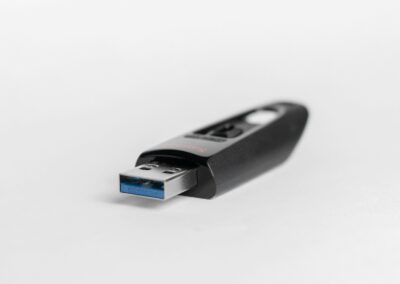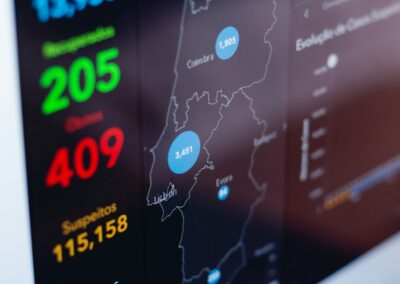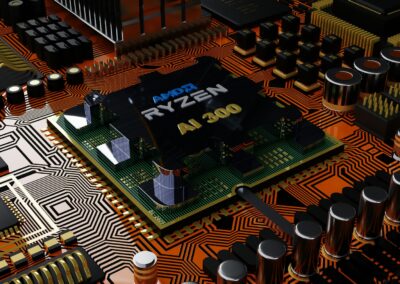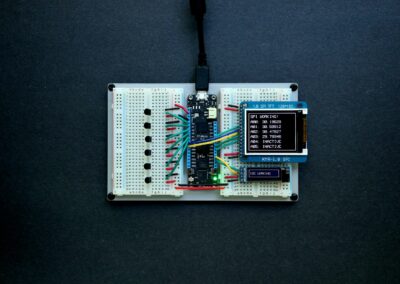The Role of Edge Computing in IoT Applications
Enhancing Data Aggregation and Filtering
Edge computing in IoT data aggregation is a transformative approach that significantly enhances the efficiency and effectiveness of IoT applications. In a rapidly advancing technological landscape, particularly in smart cities like Riyadh and Dubai, the ability to process data at the edge of the network is critical. Edge computing refers to the processing of data closer to the data source rather than relying solely on centralized cloud-based systems. This proximity reduces latency and bandwidth usage, ensuring faster and more efficient data handling.
In smart cities, IoT devices generate vast amounts of data that need to be processed in real-time for applications such as traffic management, environmental monitoring, and public safety. Edge computing enables these devices to perform initial data processing and filtering locally, sending only relevant and refined data to central systems. For example, in Riyadh’s traffic management systems, edge computing helps process data from traffic sensors and cameras, allowing for immediate adjustments to traffic signals and reducing congestion. This not only improves the efficiency of traffic flow but also enhances the overall safety and sustainability of urban transportation networks.
Benefits of Local Data Processing
The implementation of edge computing in IoT data aggregation offers several compelling benefits. One of the primary advantages is reduced latency. By processing data closer to where it is generated, edge computing minimizes the time it takes for data to travel to and from central servers. This is particularly important for applications that require real-time responses, such as autonomous vehicles, industrial automation, and smart healthcare systems. In Dubai, smart healthcare initiatives utilize edge computing to process data from patient monitoring devices, enabling immediate alerts and interventions by healthcare professionals, thereby improving patient outcomes.
Another significant benefit is bandwidth optimization. IoT devices often generate large volumes of data, which can strain network bandwidth if all data is sent to central servers for processing. Edge computing alleviates this issue by performing data filtering and aggregation locally, transmitting only the most critical information to the cloud. This not only conserves bandwidth but also reduces costs associated with data transmission and storage. In Saudi Arabia’s industrial IoT applications, edge computing helps manage data from numerous sensors and machines, optimizing production processes and reducing operational costs.
Security and Privacy Advantages
Edge computing also enhances the security and privacy of IoT data. By processing data locally, it reduces the need to transmit sensitive information over networks, thereby minimizing the risk of data breaches and cyberattacks. In regions like the UAE, where data privacy and security are paramount, edge computing provides a robust solution for protecting personal and confidential information. For instance, in Dubai’s smart banking sector, edge computing processes transaction data locally, ensuring secure and efficient financial services.
Additionally, edge computing allows for more granular control over data privacy. Organizations can implement specific policies and controls at the edge to ensure that data processing complies with local regulations and standards. This is particularly relevant in industries such as healthcare and finance, where stringent data protection regulations exist. By leveraging edge computing, businesses can ensure compliance while maintaining the efficiency and effectiveness of their IoT applications.
Implementing Edge Computing in IoT Systems
Strategies for Effective Deployment
Implementing edge computing in IoT data aggregation requires careful planning and strategy. One of the key considerations is selecting the right hardware and software components for edge processing. Businesses must evaluate their specific needs and choose solutions that offer the necessary processing power, scalability, and compatibility with existing systems. In Riyadh, smart city projects collaborate with technology providers to develop customized edge computing solutions that address the unique challenges of urban infrastructure and services.
Another critical aspect is network architecture. Implementing edge computing involves redesigning network topologies to integrate edge nodes effectively. These nodes need to be strategically placed to optimize data processing and communication. For example, in Dubai’s smart grid systems, edge nodes are deployed at various points within the energy distribution network to monitor and manage power consumption in real-time, enhancing energy efficiency and reliability.
Leveraging AI and Machine Learning
Artificial Intelligence (AI) and Machine Learning (ML) play a pivotal role in maximizing the benefits of edge computing in IoT data aggregation. These technologies enable advanced data analytics and decision-making capabilities at the edge, further enhancing the efficiency and effectiveness of IoT systems. AI algorithms can process and analyze data locally, identifying patterns and anomalies that require immediate attention.
In Saudi Arabia’s agricultural sector, edge computing combined with AI helps farmers monitor soil conditions, weather patterns, and crop health. AI-driven analytics at the edge provide real-time insights, allowing farmers to make informed decisions about irrigation, fertilization, and pest control. Similarly, in Dubai’s smart retail environments, AI at the edge analyzes customer behavior and preferences, enabling personalized shopping experiences and targeted marketing strategies.
Future Prospects and Innovations
The future of edge computing in IoT data aggregation is promising, with continuous innovations driving advancements in technology and applications. Emerging technologies such as 5G, advanced IoT protocols, and edge AI are set to revolutionize the capabilities of edge computing. 5G networks, with their high-speed, low-latency connections, will further enhance the performance of edge computing, enabling more sophisticated IoT applications.
In Riyadh, the integration of 5G with edge computing will support the development of smart transportation systems, autonomous vehicles, and advanced public safety networks. In Dubai, ongoing investments in next-generation technologies will pave the way for ultra-low-latency communication, supporting the growth of smart city initiatives and enhancing the overall quality of urban life.
Conclusion
Edge computing in IoT data aggregation is a critical enabler of smart technology applications, offering significant benefits in terms of efficiency, security, and real-time processing. By reducing latency, optimizing bandwidth, and enhancing data security, edge computing ensures the effective operation of IoT systems in smart cities like Riyadh and Dubai. Implementing edge computing requires strategic planning, the right technology solutions, and leveraging AI and ML for advanced analytics. As technological advancements continue, the role of edge computing in enhancing IoT applications will only grow, driving innovation and success across various sectors in Saudi Arabia and the UAE.
—
#EdgeComputing #IoTDataAggregation #DataFiltering #SmartTechnology #ArtificialIntelligence #GenerativeAI #BusinessSuccess #LeadershipSkills #ProjectManagement #SaudiArabia #UAE #Riyadh #Dubai































